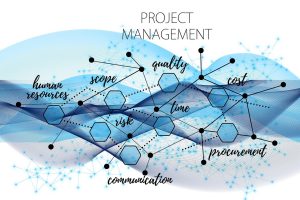
The cloud has revolutionized how businesses operate, offering on-demand access to computing resources like storage, servers, databases, and software. But with a multitude of cloud providers vying for your attention, choosing the right one can feel like navigating a maze. This post will equip you with information to navigate the “cloud conundrum” and will try to demystify the selection process, guiding you towards the perfect cloud partner for you.
Cloud Providers Demystified: A Landscape of Options
Major cloud providers like Amazon Web Services (AWS), Microsoft Azure, and Google Cloud Platform (GCP) dominate the market, each with its own strengths and specialties. Additionally, there are regional and niche providers catering to specific industries or geographical locations.
Why does Choosing the Right Cloud Provider Matter
Your cloud provider plays a crucial role in the success of your cloud journey. Here’s why choosing wisely matters:
Cost Optimization: Different providers offer varying pricing structures and services. Selecting the right provider can significantly impact your cloud spending.
Performance & Reliability: Uptime, latency, and overall performance can vary among providers. Choose a provider with a proven track record of reliability to ensure optimal application and data accessibility.
Security & Compliance: Cloud security is paramount. Evaluate the provider’s security measures, compliance certifications, and disaster recovery protocols to ensure your data will be safeguarded.
Scalability & Flexibility: Your business needs will evolve. Choose a provider that can scale its services seamlessly to accommodate your growth and changing demands.
Integration & Support: Seamless integration with existing systems and access to robust support services are crucial for a smooth cloud migration and ongoing success.
Achieving Cloud Success: A Guide to Choosing the Right Provider
Here’s a roadmap to navigate the cloud provider selection process:
- Understand Your Needs: Start by meticulously analyzing your business needs. What applications and data will you migrate to the cloud? Consider factors like storage requirements, processing power, and security needs.
- Evaluate Provider Offerings: Research the major cloud providers and niche players catering to your industry. Compare their services, pricing structures, and available resources.
- Security & Compliance: Prioritize security. Assess each provider’s security certifications, data encryption practices, and disaster recovery plans.
- Scalability & Integration: Ensure the provider’s infrastructure can scale to meet your future growth projections. Evaluate integration capabilities with your existing systems and software.
- Free Trials & Proof of Concepts: Many providers offer free trials or proof-of-concept opportunities. Take advantage of these to test-drive the platform and assess its suitability for your needs.
- Support & Customer Service: Evaluate the quality of customer support offered by different providers. Look for responsive, knowledgeable support teams to help you navigate any challenges.
Choosing the right cloud provider is a crucial decision. However you need to remember that the cloud journey is an ongoing process. Continuously monitor your cloud usage, optimize your cloud spend, and stay informed about the evolving landscape to ensure your cloud strategy remains on point.









